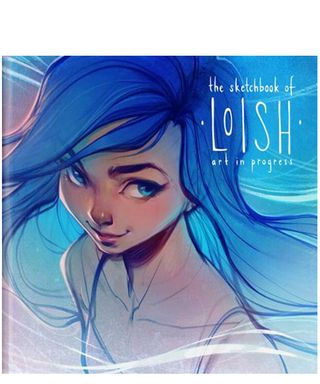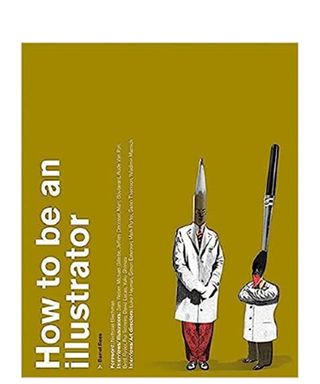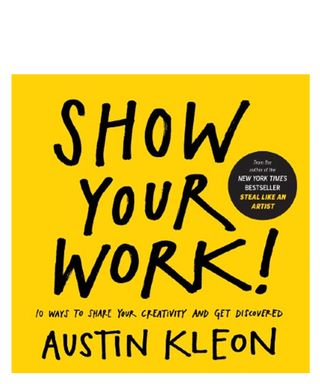Passionate about illustration? The best illustration books can help you hone your skills further or simply get started no matter your experience or skill level. At Creative Bloq and our sister magazine Imagine FX, we’ve reviewed dozens of titles, from books aimed at beginners to inspiring works for professional illustrators, and we’ve picked out our favourites.
Our roundup below includes everything from overviews of the history of illustration, to instructional books that can help you master the fundamentals or specific styles. For more options, check out our pick of the best drawing books in general. We also have a collection of essential how to draw tutorials. If you need supplies for your illustration work, see our pick of the best coloured pencils.
 Best overall
Best overall
+ Real-life scenarios
+ Conversational tone
– Not for beginners
Artist Adebanji Alade is caught up in the joys of his creative adventure, and in The Addictive Sketcher, he wants you to join him. An artist, teacher and TV-presenter, Alade covers the sketching basics, starting with the tools he uses before going on to mark-making techniques such as contours, angles and ghosting. It’s accompanied by unfussy photography and short walkthroughs, WIPs and finished art.
 Everyday practice
Everyday practice
+ Encourages creative thinking
+ Includes tips
– Too basic for some
365 Days of Art: A Creative Exercise for Every Day of the Year is an illustration book by Lorna Scobie. It collects together a whole bunch of different artistic mini-challenges with the aim of pushing the user to think outside of the box and nurture their artistic skills and thinking. Tasks range from simple things such as creating a pattern on a grid to trickier challenges like exploring calligraphy. It may be a little basic for some, though.
 Best artwork
Best artwork
+ Practical tips
+ Advice from pros
+ Different specialisms covered
Becoming a Successful Illustrator is invaluable for anyone thinking of a career in illustration (or looking for a boost in their existing career) – and this is the second edition, so it’s bang up to date. There’s plenty of advice from practising illustrators (and those that commission them), practical tips on finding work, how to market yourself and run your illustration business, plus lots of inspiring artwork.
 Sketching tips
Sketching tips
+ Insight into Loish’s sketch process
+ Two detailed tutorials
+ Lots of tips
Celebrated illustrator Loish created this illustration book to offer a deep dive into her process, revealing how she goes from initial sketches to her stunning final work. She shows her speedpaints, studies and first drafts and offers invaluable tips for illustrators and aspiring illustrators.
 Composition
Composition
+ Leading book
+ A must-read for any illustrator
This short, beautiful, slightly strange book is one of the best we’ve read on composition for illustrators. It explores the nuts and bolt of picture design. But Molly Bang also asks abstract questions: why are diagonals dramatic? Why are curves calming? Why does red feel hot and blue feel cold? At just 96 pages, you could devour this in one sitting.
 Realism
Realism
+ Leading book on colour and light
+ No jargon
We had to include the legendary artist James Gurney in our list of essential books for illustrators. We could easily have picked his first book, Imaginative Realism, in which he explore how to paint what doesn’t exist. But his second book is one of the most exhaustive written on colour and light.
 For beginners
For beginners
+ Great foundation info
+ Explores key principles
Andrew Loomis is the master of figure drawing. Here, he encourages us not to imitate his distinct style, but instead to understand the principles that prop it up. This is a good place to master the fundamental building blocks of illustration, but there’s more than enough for pros to learn something too.
 For careers
For careers
+ Covers core business principles
+ Interviews with industry pros
The realities of being a working artist mean you need to know how the industry works. A good one for beginners, How to be an Illustrator covers the basics of the business of being a professional illustrator, including putting together a portfolio, approaching clients, preparing for contract meetings, and managing your time and money.
 Networking tips
Networking tips
+ Learn how to use your network
+ Tips for getting discovered
Kleon’s Steal Like An Artist is a modern classic for anyone who wants to do anything creative. But once you’ve started making things, you have to show what you’ve made, which can be the most terrifying part. Here, Kleon, ‘a writer who draws’, explains how to use your network, and how you can become ‘findable’.
